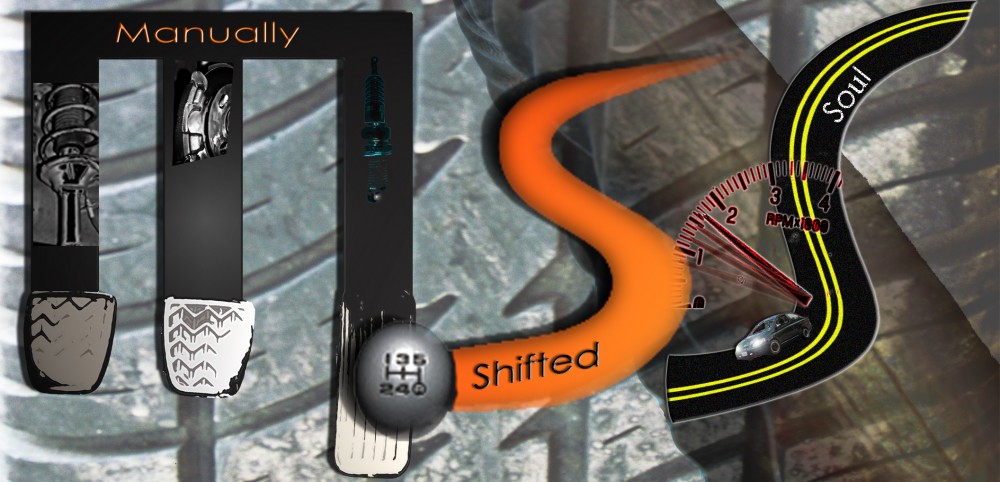Platform sharing can often be under-done in the automotive world. For those who don’t understand what this means, think of it like a template: take the formula and make what you want of it. Half-baked versions of this are thinly veiled as “superior” models in a range, such as the famously derided Cadillac Cimarron was a tarted-up Chevrolet Cavalier. On the import front, the Toyota Camry and Lexus ES are often very closely styled (although for the 2013 model year the ES350 platform moved to the Camrys big brother, Avalon). Try not to get lost; there is a point to this. It may even become a theme.
Platform sharing makes for more choices in what would otherwise be a more limited market. The Dodge Nitro is an urbanized version of a Jeep Liberty (which have both since been discarded from the Chrysler Corporation gene pool, or close to it). Likewise the Dodge Durango is the seven-seating Jeep Grand Cherokee that can have a sporty RT package with a 5.7L Hemi, while the Jeep in turn is either a more capable off-roader or a racetrack-ripping 6.4L Hemi snorting SRT8 version that puts the Durango RT to shame. But there are all those different choices—the Durango with two engines, a choice of rear or all-wheel drive, and four trim level to choose from. The Jeep follows suit with rear-wheel drive, but offers a more rock-crawling friendly 4×4 version throughout the line. The number of trims of the Jeep is a whopping nine (if you include special editions like the SRT8 “Vapor”). Think of it like soda concoctions like Coke Lime and Vanilla Coke—it’s Coca Cola of a different flavor.
While Chrysler was combining forces with Mercedes from the late-1990’s to late-2000’s, there were two cars that shared the same general formula, but had their different flavors. Neither are perfect (in fact buying either, expect things to break), but are still of interest compared to… say, a ’97 Malibu.
First comes the Mercedes SLK 320 Sport. Yup, the hard-top convertible that Yale cheerleaders would (I’d imagine) sport a whole lot, and that (upon its arrival in 1997) rebooted the hardtop convertible. The SLK 320 Sport wasn’t quite as feminine as the four-cylinder, 190hp model that the SLK had been when it started production in 1998. Instead there was a 215hp 3.2L V6 connected to either a five-speed automatic, or a six-speed manual—amen. Given it has to have the sport package, it was a decent vehicle to drive (according to reviews). Not the sharpest of sports cars, but capable.


Next was the Chrysler Crossfire, which was sharing a lot of Mercedes underneath and even a sprinkling on top. The exterior was sleek… at least until one got to just behind the door and it turned into what is best described as “tree-frog butt.” The roof came to an awful tapered arch at the rear (the back), with two large fenders sticking out either side (the thighs). Otherwise the front end wa— is—a thing of beauty for a company with such otherwise poor products of the same period. Inside was a different story. The interior from the vents down was a direct theft of Mercedes’ plastic molds, then done cheaply and spray painted silver. It came standard with the SLK320’s V6 and transmissions (thus dodging the four-cylinder altogether), but didn’t have the mix-n-match hardtop-convertible solidity of the Benz (Crossfire was either a fixed roof or a fabric topped convertible). Another weak spot of the Crossfire was those large wheels. They were too heavy, and made it feel clunky and over-tired—meaning there was too much rubber for the car, but I suppose it’s the same general idea.


There’s an asterisked third, less thought-of median in the not-so-loved C-Class Coupe. Asterisk comes from the fact it’s not actually based on the R170 platform the SLK and Crossfire shared, but a shortened W203 C-Class, coded CL203. The C-Class Coupe was something like a Mercedes C-Class sedan, but as a coupe more like the CLK—and then had the tail cut off like a Doberman Pincher. This made for a sometimes awkward rear for an odd concoction of a toenail-looking rear spoiler, and a massive amount of tire-to-shoulder metal. In other words, from the top of the rear wheel-well, to the hip (under the rear window) is one big wall of nothing. But with that said, of these three cars, that’s the one I’d have.


Alright, yes. It’s pegged as a girls car by many (as is the SLK). But it offers up the same V6, manual transmission, and sport suspension of the other two, with the benefit of a useable trunk, a rear seat, and a mix of a coupe-stiffness with a large, retractable sunroof for open-air driving. The car was only out from 2001 until 2005. The Crossfire lasted a similar lifespan from 2004 until 2008. The C-Class Coupe didn’t share the same interior pieces, instead using the newer Mercedes style inside. Albeit the base models had cloth (even manual) seats in them, the C-Coupe offers up a nice change from the other two that can’t be ignored.

- SLK, Crossfire and C-Class Coupe interiors
Image sources:
-SLK front shot originally sourced from http://www.yakez.com/for-sale-detail/Used-Mercedes-SLK320-320-Convertible-auto-with_10798141924714341960.html
–SLK rear shot
–Crossfire front
–Crossfire rear
–C-Coupe front
–C-Coupe side
–C-Coupe roof
-Interior images saved, then stacked onto single file. Sources found here for SLK, Crossfire, C-Class Coupe. Not responsible for content on those sites.
If you “Like” what you see on the Manually Shifted Soul blog, there’s a Facebook page here to go and prove it to your friends. It’ll update you automatically when a new blog shifts onto the page.

